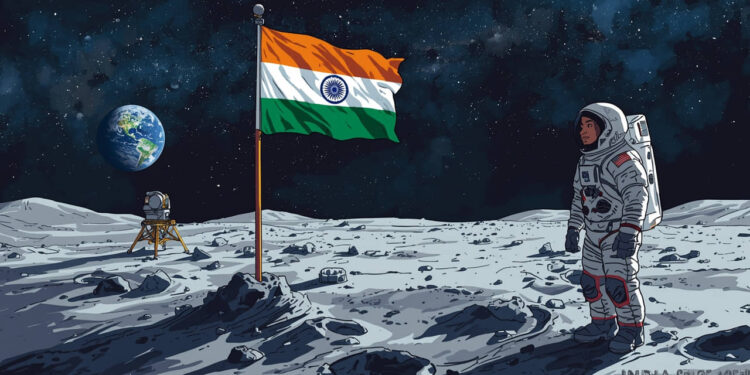India is venturing ambitiously to put astronauts on the Moon by 2047, 100 years after its Independence Day. The ambitious vision of “Mission 2047” to send a team of Indian astronauts to space for seven day, was announced as a part of Atmanirbhar Bharat or Self-Reliant India and in continuation with it will be the work for Gaganyaan.The mission is being led by S Somanath – former Chairman ISRO.
The completion of this lunar mission objective comes hot on the heels of Chandrayaan 3’s successful landing near the south pole of the Moon, followed by approval and work for missions Chandrayaan 4 and Chandrayaan 5. These missions are intended to build toward lunar exploration for a human landing. India is planning its own space station, hoping for a greater human presence in space.
Key technologies for the mission include taking the power of an existing rocket, called Launch Vehicle Mark-3, and quadrupling it to carry extra load at a distance that is 10 times farther than any exploration mission ever in India. The national space agency has plans to enhance its contribution to the world space economy: it wants a 10-12 per cent share. It will also need ongoing advancements in rocketry, spacecraft, and infrastructure.
The 2047 Moon landing is about India’s readiness to take a leadership position in space exploration and use of outer space through collaboration with global partners for mutual benefit on the same, they said. This accomplishment will show the world the technological mastery of India, and it will realize an Indian dream on the 75th anniversary of its independence.
Here are the key points of India’s lunar ambitions:
- Humans will land on the Moon in 2047.
- in the form of Chandrayaan 4 and 5 missions.
- Set up of an indigenous space station.
- Enhanced launch vehicle capabilities.
- Target 10–12% share of the world space economy.
- The symbolical linking with India’s 100 years of freedom.
This ambitious roadmap captures India’s launch and interplanetry aspirations over the next few decades in outer space, including in human space flight.


